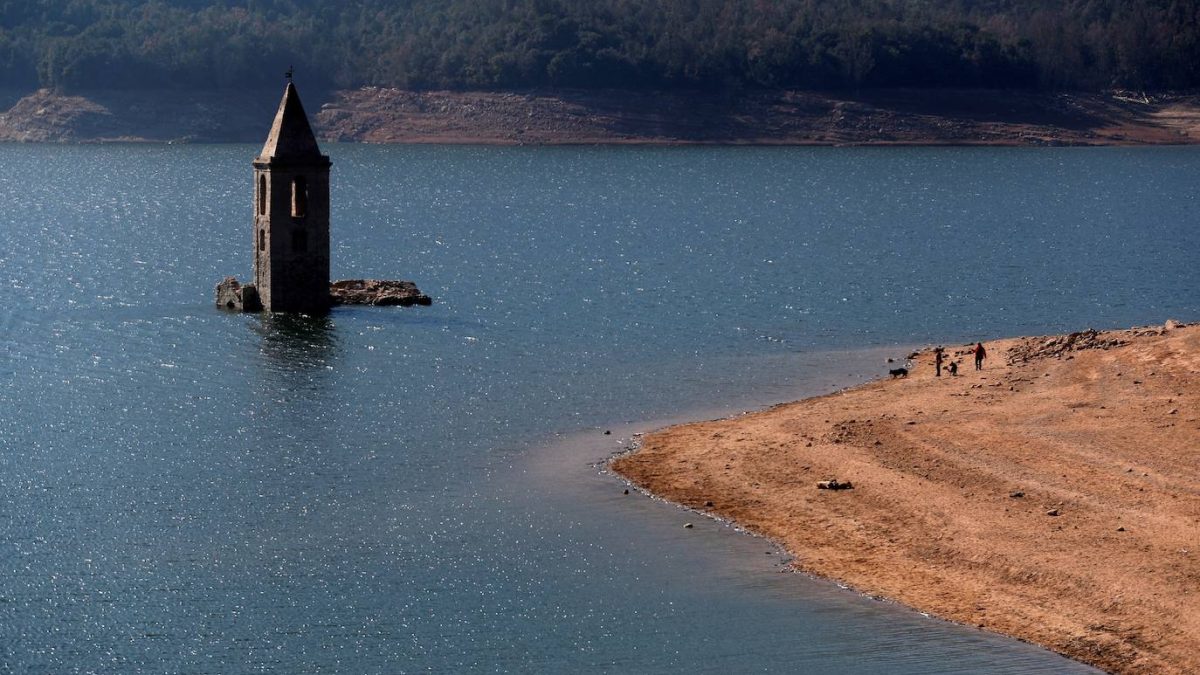
Sant Romà de Sau pertenece al municipio catalán Vilanova de Sau, en la provincia de Barcelona. Esta población tiene su origen en el año 917 y presenta una particularidad: en 1962 quedó sumergida tras la construcción del embalse, dejando a la vista únicamente el campanario de la iglesia románica, datada del siglo XI.
La edificación quedó sumergida a 23 metros de profundidad. Está compuesta por una nave y un campanario adosado que fue intervenido en 1999 por el riesgo que suponía la debilitación de su estructura. La sequía que sufre ahora el territorio ha provocado un descenso del 37% de la capacidad del pantano y la iglesia se puede observar casi al completo. Este fenómeno sucedió en 2005 cuando se vació el pantano para trasvasar el agua al de Susqueda en otro momento de sequía.
Este tipo de situaciones se repiten en otros lugares de España donde se han construido infraestructuras hidráulicas, como ocurre en el Real Sitio de La Isabela (Sacedón, Guadalajara); o en yacimientos, como el campamento militar romano de Aquis Querquennis en el embalse de As Conchas (Ourense, Galicia), que fue declarado bien de interés cultural en 2018.
Todos estos ejemplos representan un choque entre infraestructuras y cultura, generando numerosos debates y polémicas. Nuestra realidad, sin embargo, debería apuntar a una convivencia respetuosa para preservar el patrimonio, estableciendo políticas que limiten y protejan un entorno cultural frente a nuevas construcciones.
__
SUBMERGED HERITAGE: THE CHURCH OF SANT ROMÀ DE SAU
Sant Romà de Sau belongs to the Catalan municipality of Vilanova de Sau, in the province of Barcelona. This population has its origin in the year 917 and has a particularity: in 1962 it was submerged after the construction of the reservoir, leaving only the bell tower of the Romanesque church, dating from the eleventh century.
The building was submerged at a depth of 23 meters. It consists of a nave and an attached bell tower that was intervened in 1999 due to the risk posed by the weakening of its structure. The drought that the territory is now suffering has caused a 37% decrease in the capacity of the reservoir and the church can be seen almost completely. This phenomenon happened in 2005 when the reservoir was emptied to transfer water to the Susqueda reservoir at another time of drought.
This type of situation is repeated in other places in Spain where hydraulic infrastructures have been built, as is the case in the Royal Site of La Isabela (Sacedón, Guadalajara); or in sites, such as the Roman military camp of Aquis Querquennis in the As Conchas reservoir (Ourense, Galicia), which was declared an asset of cultural interest in 2018.
All these examples represent a clash between infrastructure and culture, generating numerous debates and controversies. Our reality, however, should aim at a respectful coexistence to preserve heritage, establishing policies that limit and protect a cultural environment against new constructions.
__
